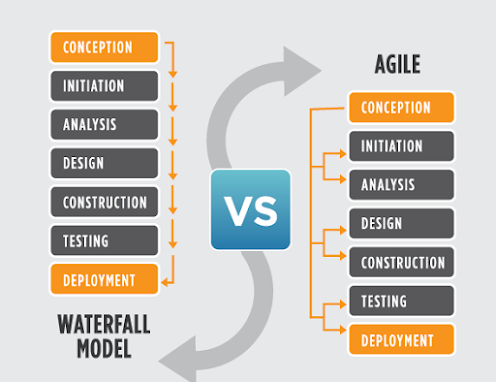Agile vs Waterfall - which methodology is better?
At the beginning of any software project, teams and organizations have to first deal with the question of agile vs. waterfall. Software projects follow a methodology of clearly defined processes or software development life cycle (SDLC) to ensure the end product is of high quality. An SDLC identifies phases and the structured flow from one phase to another phase. Typically, there are six to seven phases. Agile and waterfall are two popular, but very different, SDLC models.
WATERFALL METHODOLOGY:
Waterfall methodology is a traditional model for developing engineering systems and is originally based on manufacturing and construction industry projects. When applied to software development, specialized tasks completed in one phase need to be reviewed and verified before moving to the next phase. It is a linear and sequential approach, where phases flow downward (waterfalls) to the next.
Agile methodology is a type of incremental model of software development based on principles that focuses more on people, results, collaboration, and flexible responses to change. Instead of planning for the whole project, it breaks down development work in small increments completed in iterations, or short time frames. Each iteration includes all SDLC phases such that a working product is delivered at the end. After several iterations, a new or updated product is released.
WHAT ARE THE DIFFERENCES BETWEEN AGILE AND WATERFALL?
- Agile is an incremental and iterative approach; Waterfall is a linear and sequential approach.
- Agile separates a project into sprints; Waterfall divides a project into phases.
- Agile helps complete many small projects; Waterfall helps complete one single project.
- Agile introduces a product mindset with a focus on customer satisfaction; Waterfall introduces a project mindset with a focus on successful project delivery.
- Requirements are prepared everyday in Agile, while requirements are prepared once at the start in Waterfall.
- Agile allows requirement changes at any time; Waterfall avoids scope changes once the project starts.
- Testing is performed concurrently with development in Agile; testing phase comes only after the build phase in Waterfall.
- Test teams in Agile can take part in requirements change; test teams in Waterfall do not get involved in requirements change
- Agile enables the entire team to manage the project without a dedicated project manager; Waterfall requires a project manager who plays an essential role in every phase.
Although we are starting to see mass adoption of various Agile methodologies in the Enterprise, there are still many organizations that are slow to make the change. It is also very common for organization to transition into more of a hybrid Agile approach that combines aspect of both Agile and Waterfall.
So, how do we choose? First, we change the game a little (which is what most software development organizations do) by defining our own process. At Segue, it’s called our Process Framework, and it’s a variation on the traditional Waterfall methodology. Our modifications include use of prototyping where possible to provide the customer a better view of their finished product early in the design/development cycle. This helps to improve the team’s understanding of requirements and communication with the customer. After the primary framework of the application is completed per high level requirements, we continue to develop and also to reach out to the customer for refinement of requirements. In this way, we strive to be as iterative as possible without compromising our overall system architecture.
Once we’ve decided which basic methodology to utilize, we can further refine the process to best fit our project goals. Ultimately, although the way in which we do our work is important, delivering a solid and maintainable product that satisfies our customer is what really counts.



Comments
Post a Comment